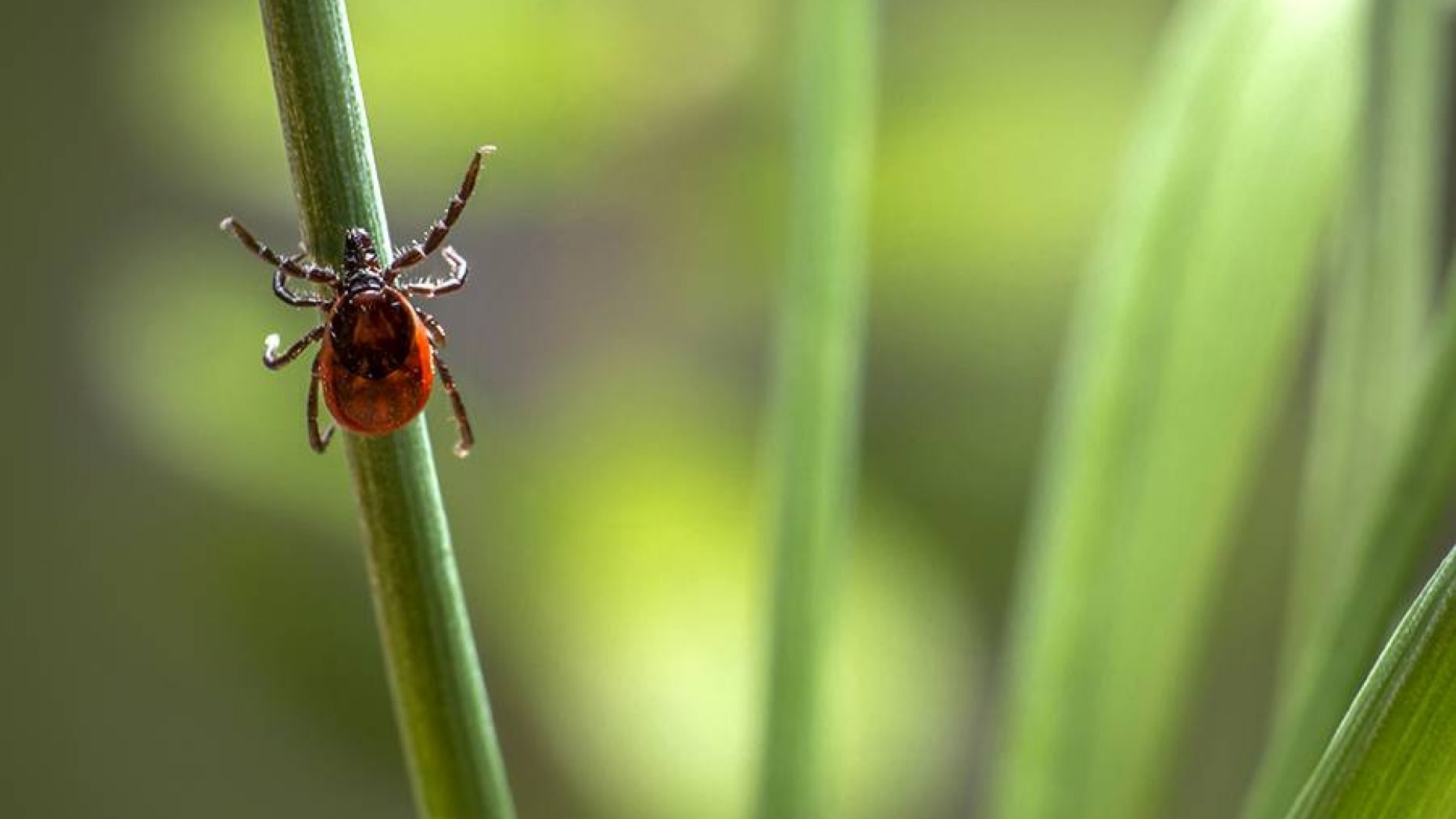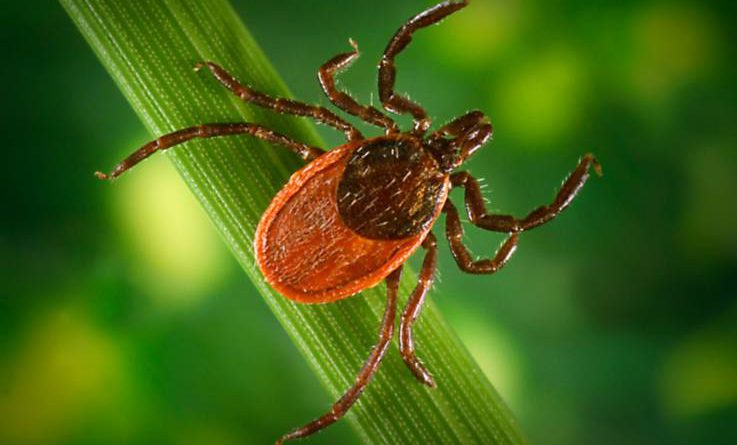Pentagon’s Weaponized Ticks – Conspiracy Theory
Last week, the U.S. House of Representatives quietly passed a bill requiring the Inspector General of the Department of Defense (DoD) to conduct a review into whether the Pentagon experimented with ticks and other blood-sucking insects for use as biological weapons between 1950 and 1975.
As an animal disease center Plum Island has been the focus of many dark government conspiracies, from top secret biological weapon experimentation during the Cold War to the working ground for Nazi scientists recruited after World War II.
Perhaps scientific experimentation mixed with government classification is just a hotbed for saucy conspiracies, or maybe there is more to Plum Island than we suspect.
A more recent theory is that Lyme disease escaped from Plum Island, which may be the most plausible conspiracy theory yet. The theory went mainstream in 2004 with Michael C. Carroll’s book, Lab 257: The Disturbing Story of the Government’s Secret Plum Island Germ Laboratory.
Plum Island is located off the coast of Long Island, New York. It was used as a military base during the Spanish-American war and in 1954 was turned into a government animal disease center.The center was established to study foot-and-mouth disease in cattle, a highly contagious disease that is rare in humans but can ravage farms and the livestock industry.
While the center was run by the United States Department of Agriculture, in 2002 during talks of selling the island it was transferred to the United States Department of Homeland Security.
The reason some believe Lyme disease escaped Plum Island is because the island is located just a few miles off the coast of Lyme, Connecticut, which is where the first outbreak of Lyme was observed in 1975. While scientists say that all animals on the island are killed to prevent the possible spread of diseases, conspiracy theorists argue that birds regularly fly between the island and the mainland and thus are able to spread any diseases they may pick up.
“I don’t know if Lyme came from Plum Island,” said April Ferguson*, who is a chief strategy officer for a Hudson Valley policy-oriented think tank, “but it’s weird that no one wants to talk about it, doctors are scared to treat and diagnose it, [and] the government doesn’t talk about it.”
If the Inspector General finds that such experiments occurred, then, according to the bill, they must provide the House and Senate Armed Services committees with a report on the scope of the research and “whether any ticks or insects used in such experiments were released outside of any laboratory by accident or experiment design,” potentially leading to the spread of diseases such as Lyme.
The amendment was put forward by Rep. Chris Smith, a Republican from New Jersey, who was “inspired” by several books and articles claiming that the U.S. government had conducted research at facilities such as Fort Detrick, Maryland, and Plum Island, New York, for this purpose.
However, some Lyme disease experts are warning that Smith’s claims should be viewed with plenty of caution. They include Phillip Baker, Executive Director of the American Lyme Disease Foundation (ALDF), who says Smith has been “terribly misinformed” with “false and misleading information.”

One of the books that Smith refers to—called Bitten: The Secret History of Lyme Disease and Biological Weapons—was published earlier this year, authored by Stanford University science writer and former Lyme suffer Kris Newby. It features interviews with late Swiss-born scientist Willy Burgdorfer—the man credited with discovering the bacterial pathogen that causes Lyme disease—who once worked for the DoD as a bioweapons specialist.
“Those interviews combined with access to Dr. Burgdorfer’s lab files suggest that he and other bioweapons specialists stuffed ticks with pathogens to cause severe disability, disease—even death—to potential enemies,” Smith said during the debate on the House floor.
“With Lyme disease and other tick-borne diseases exploding in the United States—with an estimated 300,000 to 437,000 new cases diagnosed each year and 10-20 percent of all patients suffering from chronic Lyme disease—Americans have a right to know whether any of this is true,” he said. “And have these experiments caused Lyme disease and other tick-borne diseases to mutate and to spread?” Smith asked.
Bitten suggests that military scientists dropped weaponized insects which had been deliberately infected from the air during tests. It also claims that uninfected bugs were released into residential areas in the U.S. to see how they spread, The Guardian reported.
Newby contends that these experiments could have—accidentally or deliberately—led to the spread of Lyme disease in the 1960s. And even though Richard Nixon banned biological weapons research in 1969, such experiments may have continued, Roll Call reported. According to Smith, the investigation into the claims should attempt to address several questions:
“What were the parameters of the program? Who ordered it? Was there ever any accidental release anywhere or at any time of any diseased ticks? Were any ticks released by design? Did the program contribute to the disease burden? Can any of this information help current-day researchers find a way to mitigate these diseases?”
Despite the passing of the recent bill by the House, the ALDF’s Baker says Smith’s claims and unfounded.
“I think that Rep. Chris Smith is terribly misinformed by the Lyme disease activists and by the false and misleading information contained in the book written by Newby,” Baker told Newsweek. “He would be well advised to check the facts by consulting the experts on Lyme disease at the National Institutes of Health or the Centers for Disease Control and Prevention [CDC] for accurate and reliable information before proposing such legislation.”
In a piece for the ALDF website, Baker noted that some people claim Lyme disease was introduced into the northeastern region of the U.S. after a strain of Borrelia burgdorferi—the bacterium that causes Lyme disease—escaped from the Plum Island biological warfare facility.
“However, there is ample evidence to indicate that both Ixodes ticks and B. burgdorferi were present in the U.S. well before the Plum Island facility was ever established,” he wrote, adding that the center says it has never researched Lyme disease.
The symptoms of what is now known as Lyme disease were potentially first described in Scotland in 1764. Recent research has indicated that the Lyme disease bacterium was present in America in pre-Columbian times, many thousands of years before Europeans arrived on the continent.
Furthermore, Baker says the rationale for believing that Lyme disease was used as an agent of biowarfare is “flawed.”
Source: Newsweek



